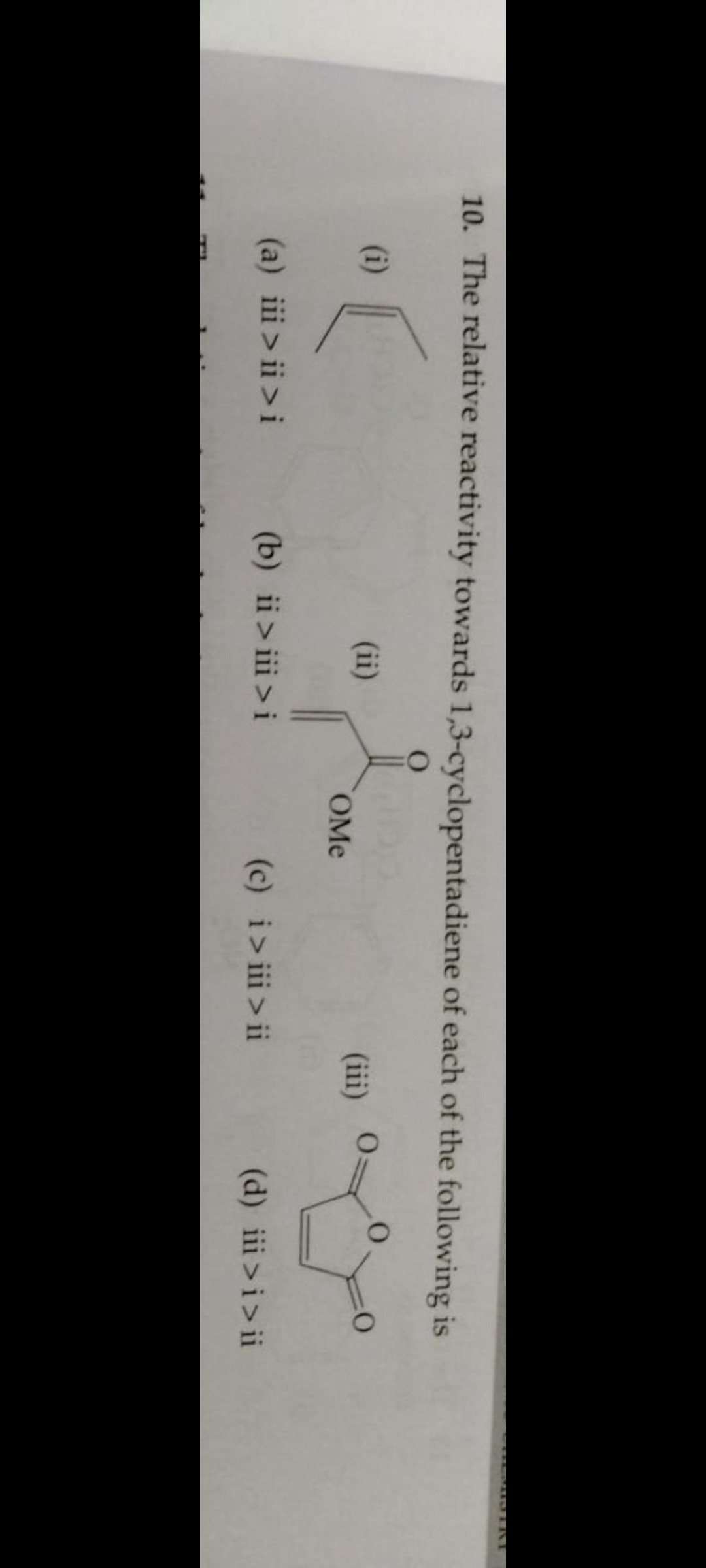Question
Question: The relative reactivity towards 1,3-cyclopentadiene of each of the following is ...
The relative reactivity towards 1,3-cyclopentadiene of each of the following is

iii > ii > i
ii>iii>i
i>iii > ii
iii>i>ii
iii > ii > i
Solution
The Diels-Alder reaction is a [4+2] cycloaddition between a conjugated diene and a dienophile. The reactivity of the dienophile is generally increased by the presence of electron-withdrawing groups, especially when reacting with an electron-rich diene like 1,3-cyclopentadiene.
The given dienophiles are:
(i) Cyclohexene: A simple alkene with no significant electron-withdrawing groups.
(ii) Methyl acrylate: An α,β-unsaturated ester, with one electron-withdrawing ester group conjugated to the double bond.
(iii) Maleic anhydride: A cyclic anhydride with two strong electron-withdrawing carbonyl groups conjugated to the double bond.
The electron-withdrawing strength of the groups attached to the double bond determines the reactivity of the dienophile. Two carbonyl groups (as in maleic anhydride) are stronger electron-withdrawing groups than one ester group (as in methyl acrylate). Simple alkenes without activating groups are the least reactive dienophiles.
Therefore, the order of reactivity of the dienophiles towards 1,3-cyclopentadiene is:
Maleic anhydride (iii) > Methyl acrylate (ii) > Cyclohexene (i)
This corresponds to the order iii > ii > i.
